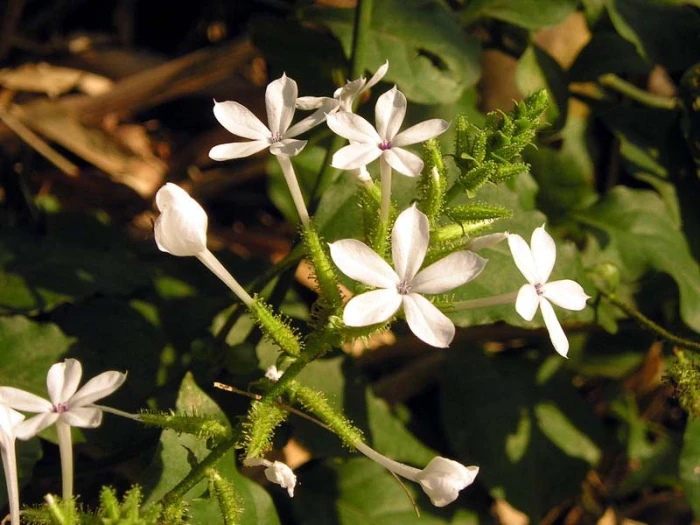Doctorbush
(Plumbago zeylanica)
Doctorbush (Plumbago zeylanica)
/
/

Bernard Loison
CC BY-SA 2.5















































Estimated Native Range
Climate Requirements for Lexington, South Carolina
| This Plant | Your Site | Plant Suitability for Your Location | ||
|---|---|---|---|---|
| • Precipitation | 3" - 179" | 46" | Aquatic | Aquatic |
| • High Temp. | 48°F - 110°F | 92°F | Your summer temperatures are normal for this plant. | Excellent |
| • Low Temp. | -12°F - 74°F | 33°F | Your winter temperatures are normal for this plant | Excellent |
Summary
Doctorbush is valued for its medicinal properties and is used in traditional medicine. It is also appreciated for its ease of maintenance and drought tolerance, making it suitable for xeriscaping. In cultivation, it is often used in borders, as ground cover, or allowed to climb as a vine in tropical and subtropical gardens. It thrives in full sun to part shade and prefers soils with medium drainage. While it has low to medium water requirements, it benefits from regular watering during prolonged dry periods. There are no major disease problems, but it can be susceptible to mealybugs and spider mites under stress. It is important to note that Plumbago zeylanica can become invasive in certain regions outside its native range, so gardeners should monitor its growth and spread.CC BY-SA 4.0
Plant Description
- Plant Type: Shrubs
- Height: 1-3 feet
- Width: 3-8 feet
- Growth Rate: Moderate
- Flower Color: White
- Flowering Season: Spring, Summer, Fall
- Leaf Retention: Evergreen
Growth Requirements
- Sun: Full Sun, Part Shade
- Water: Low, Medium
- Drainage: Medium
Common Uses
Bank Stabilization, Bee Garden, Bird Garden, Border Plant, Butterfly Garden, Deer Resistant, Drought Tolerant, Erosion Control, Groundcover, Hummingbird Garden, Potted Plant, Rabbit Resistant, Rock Garden, Salt Tolerant, Showy Flowers
Natural Habitat
Native to tropical forests, woodland edges, and scrub areas in South Asia, Southeast Asia, and parts of Africa
Other Names
Common Names: Wild Leadwort , Plumbago , Ceylon Leadwort , Wild Plumbago , Vit Blyblomma , Bai Hua Dan , Higuillo , Meladillo Silvestre , White Plumbago
Scientific Names: Plumbago scandens , Plumbago zeylanica , Plumbago mexicana , Plumbago juncea , Plumbago occidentalis , Plumbago viscosa , Findlaya alba , Molubda scandens , Plumbagidium scandens , Plumbago americana
GBIF Accepted Name: Plumbago zeylanica L.